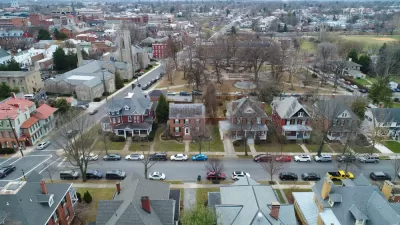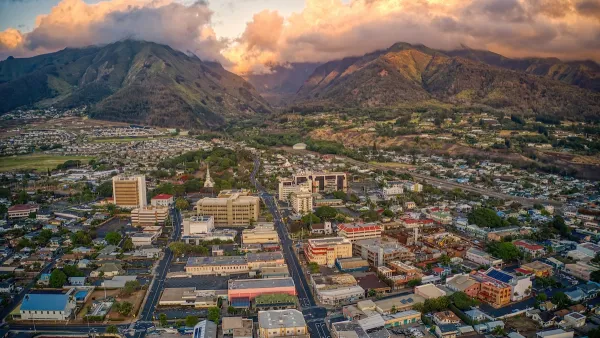Mapping housing production over the decades since the 1960s reveals a pattern that must be shifted to achieve the housing growth needed to face the economic and environmental challenges of the 21st century.

[Updated February 5, 2018] Issi Romem presents a series of maps and data findings on a study of housing growth at the census tract level in the country's largest metropolitan areas. The report Romem has created, titled "America’s New Metropolitan Landscape: Pockets Of Dense Construction In A Dormant Suburban Interior," shows exactly the huge swaths of the country that have completely stopped producing housing, and the few small places where housing growth is achieved.
Here's how Romem describes the subject of his inquiry:
In the past, virtually every patch of land in the metropolitan U.S. continually sprouted new housing, but this is no longer the case. In recent decades, residential construction has become increasingly confined to the periphery of American metro areas, while a growing swath of the interior has fallen dormant and produces new homes at a negligible pace. At the same time, a tiny fraction of the land area, scattered in small pockets throughout the metropolitan landscape, is responsible for a growing share of new home production, primarily in large multifamily structures. I refer to this increasingly spiky new pattern of housing production as “pockets of dense construction in a dormant suburban interior.”
To exemplify these concepts, Romem starts with a close study of the Los Angeles metropolitan area, telling the story above in maps, charts, and stylized diagrams. The stylized diagrams Romem has created segue to a point about how the pattern repeats in other metropolitan areas, like Atlanta, Dallas, Las Vegas, and Phoenix. Romem provides additional themes and concepts for understanding his findings, on subjects like how low-density development spreads and how the pickets of dense development are enabled under current land use regulation schemes.
All these findings and explanations lead to a big recommendation from Romen:
I am suggesting that, while cities continue to fight the battle for development in dense hubs, they also question the de facto exemption granted to low-density suburban areas from the onus to produce more housing. The dormant suburban sea is so vast that if the taboo on densification there were broken, even modest gradual redevelopment – tearing down one single-family home at a time and replacing it with a duplex or a small apartment building – could grow the housing stock immensely.
For more insight on Romem's findings, see an article written in admiration by Joe Cortright.
FULL STORY: America’s New Metropolitan Landscape: Pockets Of Dense Construction In A Dormant Suburban Interior

Planetizen Federal Action Tracker
A weekly monitor of how Trump’s orders and actions are impacting planners and planning in America.

Maui's Vacation Rental Debate Turns Ugly
Verbal attacks, misinformation campaigns and fistfights plague a high-stakes debate to convert thousands of vacation rentals into long-term housing.

San Francisco Suspends Traffic Calming Amidst Record Deaths
Citing “a challenging fiscal landscape,” the city will cease the program on the heels of 42 traffic deaths, including 24 pedestrians.

Amtrak Rolls Out New Orleans to Alabama “Mardi Gras” Train
The new service will operate morning and evening departures between Mobile and New Orleans.

The Subversive Car-Free Guide to Trump's Great American Road Trip
Car-free ways to access Chicagoland’s best tourist attractions.

San Antonio and Austin are Fusing Into one Massive Megaregion
The region spanning the two central Texas cities is growing fast, posing challenges for local infrastructure and water supplies.
Urban Design for Planners 1: Software Tools
This six-course series explores essential urban design concepts using open source software and equips planners with the tools they need to participate fully in the urban design process.
Planning for Universal Design
Learn the tools for implementing Universal Design in planning regulations.
Heyer Gruel & Associates PA
JM Goldson LLC
Custer County Colorado
City of Camden Redevelopment Agency
City of Astoria
Transportation Research & Education Center (TREC) at Portland State University
Jefferson Parish Government
Camden Redevelopment Agency
City of Claremont





























